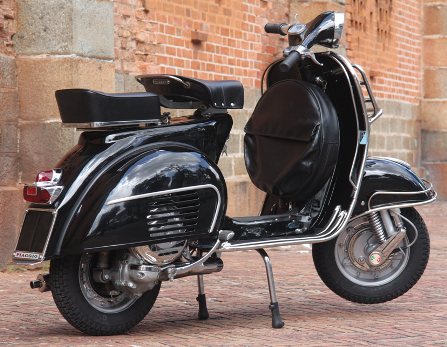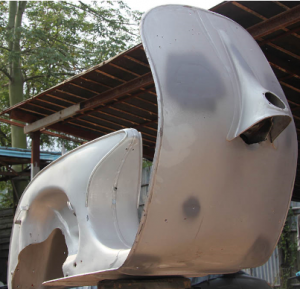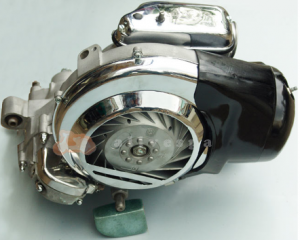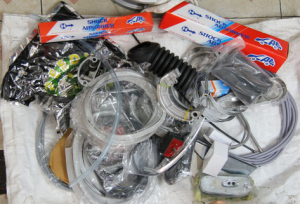|
The Vespa Guide http://vespaguide.com/?p=1175 Export date: Thu Apr 3 13:00:20 2025 / +0000 GMT |
Classic 1963 Vespa GS150 Restoration Project Original Post: About Autos 1  Restoring a classic will involve many hours of disassembly, inspection and either repair or replacement of components. Produced in their millions, Vespa scooters are reliable, inexpensive vehicles that are becoming very popular with collectors and riders. Originally invented to fill a need for inexpensive transport, classic scooters can be found all over the world fulfilling that need again. The restoration covered here is of a VBS Vespa, with GS specification modifications. Scooter restoration specialists AllVespa performed the restoration. The scooter started out as a 1963 VBC with a 150-cc engine. Although this restoration was performed by a professional company, it gives the private owner/restorer an insight into what is required to make the older Vespa's serviceable again. The Vespa was purchased and restored by AllVespa in Vietnam where the scooter has been a popular form of transport for many years. Although the Vespa's have proven to be reliable machines, the company disassembles every machine to check for damage or cracks on the chassis which may need welding. (Anyone restoring one of these classic scooters is well advised to follow this example)  Disassembly of a scooter ideally should be done on a lift to put the scooter at decent working height. This is particularly important with scooters as many of their mechanical components are located below the body/chassis panels (similar to a car). Disassembly of a scooter ideally should be done on a lift to put the scooter at decent working height. This is particularly important with scooters as many of their mechanical components are located below the body/chassis panels (similar to a car).Although the pressed steel chassis has proven to be very robust, it is essential to have the paint removed by sand or grit blasting. This process will give the mechanic chance to fully inspect the chassis. In addition, cracked paint can give the appearance of a more serious crack in the steel below it. (Cracked paint is a good indication of movement and the mechanic should photograph any suspect areas so that a more detailed inspection can be made once the paint has been removed). The paint used on this restoration is made by I.C.I.(now owned by the Akzo Nobel Group). As with most restorations, it is prudent to replace certain components. In this restoration the following components were replaced for safety and reliability reasons (and appearance in some cases): 
In addition, the 150-cc engine was fully rebuilt. Although the Vespa 2-stroke is a relatively reliable design, wear on certain components is inevitable. In particular the 2-stroke lubrication system gives only a minimal amount of lubrications to pistons and crank bearings, but at the same time the burnt oil (after combustion) will slowly build up in the muffler and around the exhaust port, which will greatly reduce performance. During the rebuild of the engine the following components were replaced or reconditioned:
The finished scooter is as good as new, or even better with the addition of an expansion chamber |
Links:
|
|
Post date: 2017-01-18 07:06:35 Post date GMT: 2017-01-18 07:06:35 Post modified date: 2017-01-18 07:06:35 Post modified date GMT: 2017-01-18 07:06:35 |
|
Export date: Thu Apr 3 13:00:20 2025 / +0000 GMT This page was exported from The Vespa Guide [ http://vespaguide.com ] Export of Post and Page has been powered by [ Universal Post Manager ] plugin from www.ProfProjects.com |

